HEAVY rainfall and rising water levels early in January and February prompted an early spike in River Canal Rescue call-outs.
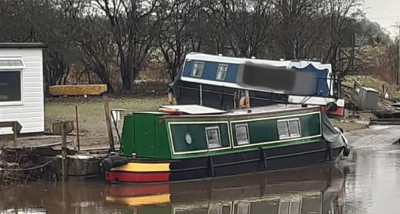 RCR managing director, Stephanie Horton, reports boats were left submerged and others separated from their moorings and pushed onto towpaths or wedged against pontoons and other craft.
RCR managing director, Stephanie Horton, reports boats were left submerged and others separated from their moorings and pushed onto towpaths or wedged against pontoons and other craft.
30 vessels affected by flood
At Acton Bridge on the Weaver, RCR was called upon to assist 10 boats. Some were lifted onto the towpath and several more needed assistance after sinking in nearby Winsford (Both pictured).
"In addition to these, RCR estimates over 30 vessels were affected by the flood, where waters rose by three metres overnight, leaving a large number of vessels to be recovered, with Stephanie commenting:
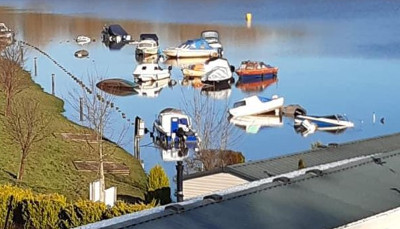 “While not all these situations can be avoided, owners can help prepare their boats for such events by checking mooring ropes are loose enough to cope with sudden changes in water levels, and if the mooring is at risk of flooding, run a rope to locations that can still be accessed even in a flood situation.
“While not all these situations can be avoided, owners can help prepare their boats for such events by checking mooring ropes are loose enough to cope with sudden changes in water levels, and if the mooring is at risk of flooding, run a rope to locations that can still be accessed even in a flood situation.
“To stop a vessel drifting onto land when water levels rise, position a scaffold pole or poles, or a boarding plank, between the boat and the river/canal side edge and fix it into position. This acts as a mooring post, preventing flood waters from floating the boat onto land.”
Check vessels as soon as possible
Alongside weather-related emergencies, RCR reports water ingress, due to badly-worn deck boards and leaking stern glands, is the main reason for emergency rescue call-outs during lockdown, and is urging people to check their vessels as soon as possible. Stephanie continues:
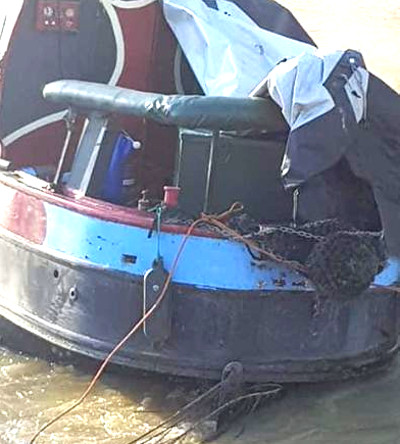 “Engine bays are typically covered by marine-ply deck boards, supported by a V-shaped steel channel with drain holes to collect any seeping rainwater. If the drain holes are blocked by debris, leaves and dirt etc, water flows over the channel sides into the engine bay. Over time, the wooden deck boards decay, creating a wider gap between them, and so the downward spiral continues; more debris falls into the channel holes and more water flows into the engine bay. Prevent this by replacing worn deck boards and periodically clearing drainage holes.
“Engine bays are typically covered by marine-ply deck boards, supported by a V-shaped steel channel with drain holes to collect any seeping rainwater. If the drain holes are blocked by debris, leaves and dirt etc, water flows over the channel sides into the engine bay. Over time, the wooden deck boards decay, creating a wider gap between them, and so the downward spiral continues; more debris falls into the channel holes and more water flows into the engine bay. Prevent this by replacing worn deck boards and periodically clearing drainage holes.
“If a stern gland leaks when the vessel is stationary, you need to pump in grease or adjust the collar. The collar of rubber or brass forms a barrier where the propeller shaft exits the hull, and must be well-greased with tight packing to prevent excess water leaking. The grease should act as a seal while not in use and you compress the packing by adjusting the nut on the stern tube.
“If greasing and tightening the adjust bolts fails to slow the leak, this usually indicates the packing needs replacing. Address this fast; a quick build-up of water will cause the vessel to sink (even if you have a bilge pump, it will soon be overwhelmed).
“When the propeller shaft is turning, a stern gland should leak a few drops a minute—it’s difficult to give guidance on the exact amount as this is dependent on the gland’s age and type. However, water must circulate through the stern gland to keep it cool as the shaft turns. So if you’re unsure what adjustment to make, check the temperature of the stern gland; if it’s too hot, the packing’s too tight.
“Water spilling into the engine bay will cause the vessel to sit lower in the water, which in turn puts shower, sink or air outlets nearer to the water level, often with devastating results. It’s a particular risk in busy areas, where passing boats cause a wave or with air-cooled engines, where vents are positioned on the side of the hull.”
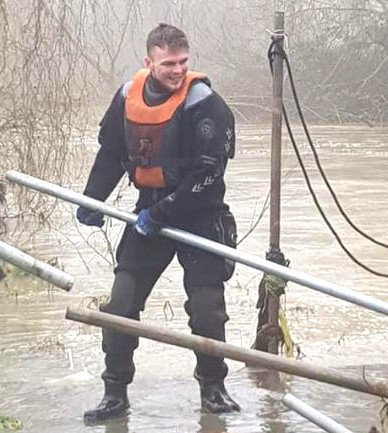 Water ingress
Water ingress
Stephanie warns:
“Water ingress not only increases the risk of sinking; once water seeps into the engine area it can damage electrical components such as alternators and starters. When the engine’s running, any standing water will be thrown over these components, which if left for a long period of time, can rust, affecting their operation.
“And a build-up of water in the bilges will eventually leach into the gearbox (it doesn’t have to cover it), and enter through its seals, contaminating the oil. If not flushed out, it will eventually result in gearbox failure. To see if water has got this far, check your dip stick; if there’s a creamy residue in the oil, it’s a clear indication it has and you’ll need to flush out before use.
“Water ingress should not be a problem if you have a bilge pump. If possible invest in an automatic one as it’s more reliable than a manual. Once left on the ‘automatic’ setting, its float switch dictates when it should pump, ensuring an immediate response to water ingress. And should a leak develop from elsewhere, such as the cooling system or hull, it will keep your vessel safe. (Picture of RCR Engineer Kerry Horton easing a boat and below Storm Christoph wreaking havoc.)
“If you have a bilge pump, you should have a bilge filter. This stops your boat pumping pollutants into the waterways and ensures you’re following Boat Safety Scheme recommendations.”
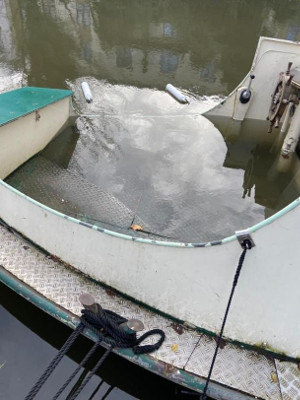 Section nine of its certification document asks ‘does the bilge pumping system minimise the risk of avoidable pollution?’
Section nine of its certification document asks ‘does the bilge pumping system minimise the risk of avoidable pollution?’
RCR’s filter, Bilgeaway, is the world’s first truly environmentally-friendly bilge discharge filter. It extracts contaminants from bilge water, renders them non-reactive and leaves the contents in a cartridge which can be disposed of and the housing re-used. Find out more at www.bilgeaway.co.uk.
Stephanie concedes:
“While a bilge pump (automatic or manual) gives you extra peace of mind, I’m acutely aware it’s only effective if it has a battery or electric power supply. During lockdown, you may have been unable to check battery charge levels or your shore supply, so this is another reason to visit your boat.”
She concludes: “The Government* and other bodies now recognise the risk posed by restricting access to vessels, so a visit to check on a boat’s safety is an acceptable reason to travel. If you fail to visit or maintain your boat during lockdown, a future insurance claim may be rejected.
“Some insurance companies are not accepting lockdown as a reason for failing to check a vessel, and may refuse claims if the owner cannot show every attempt was made to ensure the boat’s safety—even if this means paying a third-party or arranging/paying for a marina to do so. Having proof of this may be required as part of a current claim’s process.”
